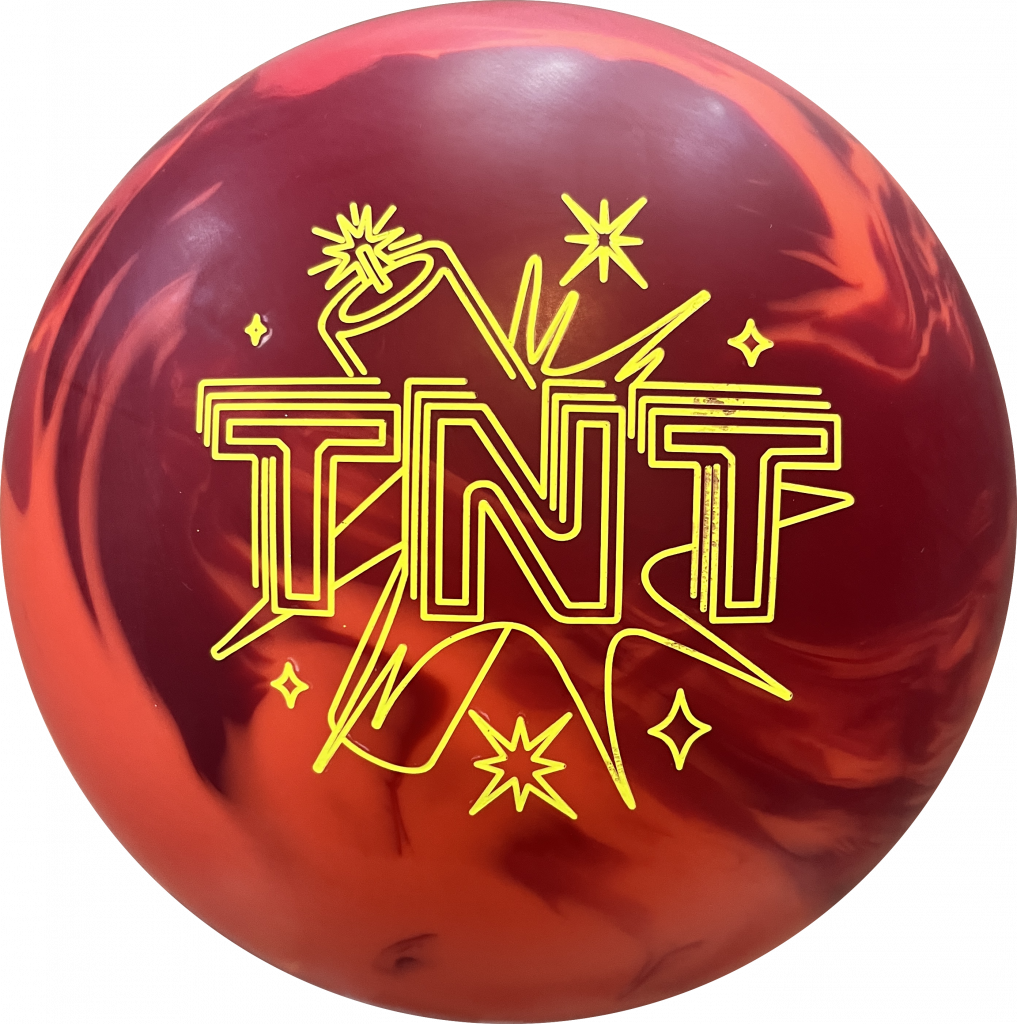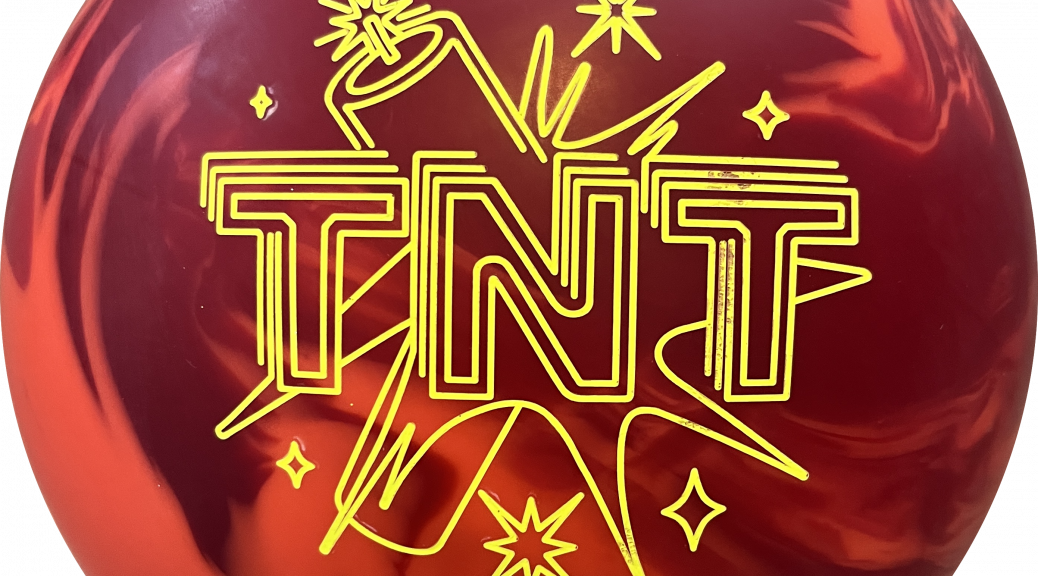


First Impressions
We expected the TNT to be a benchmark ball. It looks benchmark like but it feels like we’ll need more time before we bench the Phaze II or Idol.
Check out our friends Jeff Miller and Ron Hoppe at Haley’s Pro Shop for world class drilling and coaching!
Tamer Elbaga (Lefty)
Style: Tweener
RPM: 375 rpm
PAP: 5 & 3/8 up
Average Speed: 18.5 mph (at release)
Axis tilt: low
Axis rotation: medium/high
Test Equipment: 14 Pounds
Layout: 50 x 5 x 45
Bryan Hoffman (Righty)
Style: Stroker
RPM: 280 rpm
PAP: 4 1/2 & 1 1/2 up
Average Speed: 18.5 mph (at release)
Axis tilt: high
Axis rotation: medium
Test Equipment: 14 Pounds
Layout: 50 x 5 x 45
Tyler Church (Righty)
Style: Power Player
RPM: 450 rpm
PAP: 5 1/2 & 1/2 up
Average Speed: 19 mph (at release)
Axis tilt: med
Axis rotation: medium
Test Equipment: 14 Pounds
Layout: 50 x 5 x 45
“Keep in mind that coverstock accounts for 70% of ball reaction, but the core creates the dynamic shape of the reaction. Your driller will alter the shape to suit your game.”
Pattern
THS: 42ft, 23ml
Sport: TBD
Specs
The Roto Grip TNT uses the Torpex symmetric core inside the eTrax + Solid coverstock.
15 pound = RG of 2.47, diff of .052
14 pound = RG of 2.54, diff of .051
Coverstock finish: 2000 grit abralon
Overall
Let’s jump in. TNT, fabulous name. We were surprised no one has used it before that we can recall. I guess there was a Triumph TNT but anyway. So we have eTrax + cover which is going to be a litle stronger than the cleaner eTrax but not as strong as MicroTrax which is a nano tech cover. The only previous iteration was on the RST X-2 in pearl. Now they have this new Torpex core. It’s fairly close to benchmark specs and shape. I prefer one end of these type of cores to be flat but whatever. Also it uses what they call a Torque Sphere in the center. Kind of like a power ball in the Hyroad. The idea is to make it even more center heavy and reduce the RG. Lot of technical stuff but it amounts to a pretty controllable reaction on lane. The 2000 grit solid gives enough traction to slow down the ball where needed. The core is not very flippy but pretty arcy despite the higher differential. I’m sure in a different cover this core will do something else. Here it isn’t like super arcy for me nor is it flippy. It seems like a nice balance. For me this seems to be somewhere in between a strong control and mid control. It doesn’t quite feel strong enough for strong control like the Phaze II or Idol. It doesn’t feel weak enough to fit in Mid Control. That’s where my biggest struggle is. Here are a few shots with the Phaze II so you can see what I mean. Same surface finish and the Phaze II is clearly more ball. Where I think the TNT will come into its own and become a benchmark is when it lane shines a bit or has less surface and it can fit in the mid control category more squarely.
Tyler is next. At first he was a little deeper thinking it will be a bit bigger than it was. Looked a bit lazy but ultimately he was simply too deep. Once he moved right, the ball started to look like what it was intended to be. He found a nice spot somewhere between the 3rd and 4th arrow. When closer to the 3rd arrow, he’s able to get out to the 5-6-7 breakpoint. When he’s around 18 or so, the ball will not make it up the hill from there so he had to move the breakpoint in to 9 or 10. So the ball was somewhat limited in overall board coverage. Not that it doesn’t cover boards per se but it seemed to have a bit of a lazy look if you asked it to cover too much. It’s one of those balls that needs less board coverage or I should say more accurately shallower angles if you want to impart more energy at the pins. With the right angles and understanding the ball, it worked really well. But it was a little bit of a surprise for Tyler that this shape and limitation isn’t exactly how he would classify a benchmark for him, especially given how much he enjoys the whole Idol lineup. The Idol doesn’t have that limitation for him. Next to the P2, you can also see that while the P2 can be in a similar zone, it is more continuous with more backend so it wants to drive harder and therefore the shallower angles is harder with the P2. So in a way, it is different enough for them to actually be compliments.
Next up is Bryan. The TNT was a surprise struggle. Dull balls can be tricky for Bryan but it really depends on the motor. If the cover is strong enough to push Bryan in, the motor better have the wheels to recover. Bryan’s best look was straight up the second arrow. If you take those in isolation, the ball looks great. But for us to get the information across to what this ball is doing for Bryan, we have to explain and show more. When Bryan tried more direct, the ball burned up. It didn’t like being in the friction. When he tried to move left, the ball just didn’t have the giddyup to get the the pocket. Moving everything parallel was what he had to do but he couldn’t really get the TNT to face up well. I feel like it really goes back to what I said initially. The TNT is caught in no man’s land a bit in terms of what it is. It’s not quite Strong Control which the Motiv Forge fits for Bryan for example. But it’s cover is a little too strong to fit in the Mid Control. I do think the cover is a touch too strong for the core.
Final Thoughts
So closing out on this, I think the Roto Grip TNT could fit in either Strong Control or Mid Control but not squarely in either out of the box and will definitely depend on the bowler and conditions. This was probably closest to being a benchmark for my game and I’m a rev/speed matched player. What I would likely do is lane shine it or take it to 3000 which would allow it to be a proper stepdown to something like the Phaze II, give it a bit more versatility. As a lefty especially, this could be just the ticket in that very hard to fill Mid control ball.
Thanks for watching.

